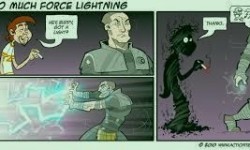Often when people start vision improvement and begin paying more attention to how they’re using their eyes, they are surprised to find how much they’re not relaxed with their looking habits. If you think “more is better” in most cases, or that nothing worthwhile is accomplished without hard work, you might be carrying that over-doing pattern into your vision too. Close your eyes and think of looking at something. Can you feel your brow or facial muscles tense up? If you agree this isn’t necessary, might it be possible to change this pattern?
The first step to improving your visual habits is Intention, wanting to use your precious eyes and brain to see in as relaxed and healthy a way as possible. The second step is Awareness. If you don’t realize you’re doing something contradictory to your goal, you won’t change what you’re doing! The third and final step, built on a firm foundation of the first two, is Practice of new more helpful habits. Maybe to start with it’s only resting your eyes when they’re tired with palming, but that’s still a good start.
An interesting visualization exercise to raise your awareness of your vision habits comes from Greg Marsh, the well-known Colorado vision teacher. This is a deeper version of the practice I mentioned earlier. To start, close your eyes, and imagine looking at something easy for you to see. If you can see well in the distance, maybe it’s a tree on a hill far away. If you can see well up close, think of looking at the details of a flower in your hand. Feel how relaxed your eyes and face are as you look, and really enjoy that. Now, pretend you’re looking at something which is harder for you to see, either closer or farther, whichever is your particular area of difficulty. Have you introduced some strain into your looking, even with your eyes closed?
Dr. Bates, the natural vision pioneer, said over 100 years ago that all vision problems come from strain. It sounds so simple, “Relax, and you’ll see better!”, but sadly many of us don’t know what “relaxed” feels like. Or our strain is so familiar we don’t see it as abnormal, so it doesn’t even occur to us to want to let it go. I think most people’s strain comes from trying too hard or doing too much, like the cartoon image, generating a fiery blaze when a small match flame would be enough. Yet another form of strain is the opposite, doing too little, hanging back and not participating.
Inaction can be as stressful as excessive action. You can expend huge amounts of mental energy procrastinating, avoiding, making excuses, or doing non-essential activities which are not bringing you any closer to your intended goal. Remember the first step of Intention? To intend to see is to intend to connect visually with your environment. If you’re blocking some of the information-carrying light rays from coming in by shutting down your visual channel with apathy or despair, you’re not helping yourself.
About eyeglasses, Dr. Bates said that any glasses in front of your eyes will cause you to strain to see through them. This is even more true if they’re over-prescribed, or you’re wearing an incorrect prescription. Your eyes and brain want to see without that barrier between you and the rest of the world. Experiment with taking your glasses off in safe environments (not when driving, please!) and seeing how your eyes feel. I haven’t worn glasses in years, but when I imagine taking them off now, I breathe a sigh of relief and relaxation. I am no longer being forced to see, I’m letting myself see naturally. Big difference.
To me to see well is to BE well, energetic and connected to Life, enthusiastic about all that’s coming your way. Are your habits helping you see more clearly, or are they getting in the way of that? There’s no time like the present to turn in a more positive healthy visual direction. You’ll be so glad you did. A rich, colorful, more vibrant life is waiting for you.
get help on our Facebook Group!

I wore strong glasses, then contact lenses, from age 5 into my 40s. While making many mistakes, eventually l learned how to improve the way I use my eyes and to see in a more relaxed, healthy manner. It is my pleasure to coach others to do the same. Visit me at https://NancyLNeff.com.
